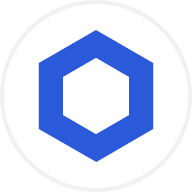Exploring the Role of Chainlink in Tokenizing Real-World Assets
Introduction
Tokenization of real-world assets (RWAs) is rapidly emerging as a transformative opportunity within the blockchain industry. By converting physical and intangible assets into digital tokens, tokenization unlocks benefits such as enhanced liquidity, fractional ownership, and improved transparency. This article explores the role of Chainlink in facilitating the tokenization of RWAs and the broader implications for the digital asset ecosystem.
Understanding Real-World Asset Tokenization
Real-world assets encompass a wide range of physical and financial items, including real estate, commodities, equities, bonds, and intellectual property. Tokenization involves creating digital tokens that represent ownership or a stake in these assets, leveraging blockchain technology to ensure secure, transparent, and efficient management.
Benefits of Tokenization
Liquidity: Tokenization transforms traditionally illiquid assets into liquid, tradable tokens, enabling easier buying, selling, and trading on digital platforms.
Fractional Ownership: It democratizes access to high-value assets by allowing investors to own fractions of an asset, broadening investment opportunities.
Reduced Transaction Costs: Blockchain technology streamlines transactions by minimizing intermediaries, reducing costs and time delays.
Transparency: The immutable nature of blockchain ensures transparent and tamper-proof transaction records, building trust among investors.
Chainlink's Role in Tokenizing RWAs
Chainlink is a decentralized oracle network that plays a crucial role in the tokenization process by providing reliable, real-world data to smart contracts. This data is essential for maintaining the integrity of tokenized assets.
Key Services Provided by Chainlink
Data Feeds: Chainlink offers secure and tamper-proof data feeds, such as real-time price information, ensuring accurate token values.
Cross-Chain Interoperability Protocol (CCIP): This service enables seamless movement of tokenized assets across different blockchain networks.
Proof of Reserve: Chainlink provides verification services to ensure the assets backing the tokens are accurately represented.
Applications in Decentralized Finance (DeFi)
Tokenized RWAs have the potential to revolutionize the DeFi landscape by integrating real-world assets into blockchain-based financial systems. This integration can enhance liquidity conditions, increase transparency, and reduce systemic risks.
Examples of Chainlink in Action
Stablecoin Management: Chainlink's tools are used by various projects to manage stablecoin minting, pricing, and compliance.
Asset Verification: Chainlink helps verify asset backing and supports smooth operation across blockchain networks.
Navigating Challenges and Risks
While tokenization offers numerous benefits, it also presents challenges such as regulatory compliance and custody of physical assets. Ensuring secure and reliable connections to off-chain data is crucial for the success of tokenized RWAs.
Conclusion
Tokenization of real-world assets is poised to transform the financial ecosystem by enhancing liquidity, democratizing access, and improving transparency. Chainlink's decentralized oracle network provides the necessary infrastructure to support and scale tokenized assets, playing a pivotal role in this revolution. As the landscape evolves, Chainlink and other platforms will continue to drive innovation and facilitate the broader adoption of tokenized assets.
© 2025 OKX. Este artículo puede reproducirse o distribuirse en su totalidad, o pueden utilizarse fragmentos de 100 palabras o menos de este artículo, siempre que dicho uso no sea comercial. Cualquier reproducción o distribución del artículo completo debe indicar también claramente lo siguiente: "Este artículo es © 2025 OKX y se utiliza con permiso". Los fragmentos permitidos deben citar el nombre del artículo e incluir su atribución, por ejemplo "Nombre del artículo, [nombre del autor, en su caso], © 2025 OKX". Algunos contenidos pueden generarse o ayudarse a partir de herramientas de inteligencia artificial (IA). No se permiten obras derivadas ni otros usos de este artículo.

